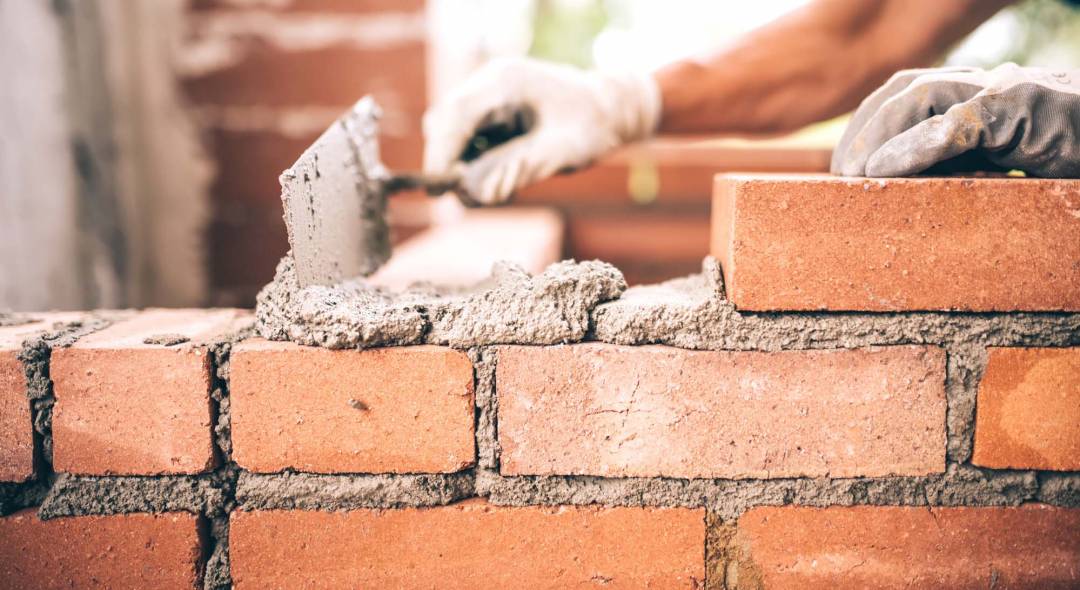Things about Bricklayer Auckland
Wiki Article
Getting My Bricklayer Auckland To Work
Table of Contents5 Simple Techniques For Bricklayer AucklandThe Bricklayer Auckland IdeasThe Buzz on Bricklayer AucklandThe Buzz on Bricklayer Auckland
The difference in between Absolutely no as well as classic stonework is in the laying of the block. The brick is no longer pressed up and down, but slanted.In enhancement, we likewise paid attention to an excellent proportion in between the length as well as size of the block so that it is perfect for working with a stretcher bond. Bricklayers are an essential career in the building market, responsible for laying blocks, pre-cut rock as well as concrete blocks in mortar. Bricklayers construct, prolong and also fix residential and business structures, as well as other frameworks such as structures, wall surfaces, chimneys or ornamental stonework.
Your time as a bricklaying pupil will typically be divided in between your company as well as training company (such as a college), with at least 20% of your regular functioning hrs invested on training. Your training may happen each week, each month or in a separate block of time, and it can happen at your area of work, at your training provider or online.
Bricklayer Auckland - Truths
When looking into building and construction, you invariably uncover that any brand-new or cutting-edge idea has actually been tried over and also over again, commonly stretching back years. Among these new-but-actually-old ideas is the concept of a mechanical bricklayer, a machine to automate the construction of masonry walls. It's easy to see the appeal of this concept - masonry building and construction appears virtually perfectly fit for mechanization.It doesn't appear like it would certainly call for literally intricate motions - each block gets a layer of mortar applied, and is just laid in place alongside the previous one. As well as since each traditional joint coincides dimension, positioning is almost deterministic - each block is the exact same set distance from the previous one.
These devices couldn't sense anything regarding their setting, or step where a block required to go - they merely extruded a layer of mortar as well as mechanically placed a brick at normal periods (Bricklayer Auckland). It's vague the number of of these machines ever before made it beyond the drawing board, yet a minimum of one of these (John Knight's) was utilized to build a block wall that apparently still stands today.
Throughout the years, stonework has decreased in value as a building and construction innovation in the established world, and with it the rate of interest in automating it. Unlike with concrete 3D printing, where there are dozens of efforts to establish the technology, I can only find a handful of existing efforts to automate stonework. Bricklayer Auckland.
The Best Guide To Bricklayer Auckland
It's qualified of placing blocks in click this limited hallways or complicated edges, as well as Hadrian can create all the wall surfaces of a little structure with just a few moves of the lorry. Hadrian can currently establish about 200 obstructs a hr, however they're aiming to be able to do 1000 blocks a hr or even more (the blocks it sets are different from the block masonry used in the United States, yet in US masons can establish someplace in the neighborhood of 400 obstructs a day).
SAM has a collection of sensors to make up for the motion of the platform and also ensure it's placing blocks degree, as internet well as can collaborate with bricks of all different sizes (though it will not develop CMU block walls). It obtains installed to a movable scaffolding that's raised slowly as the wall is finished.
The marketing material on Building Robotics' website recommends that it's no longer their primary focus - even more emphasis is provided to their various other item, MULE.Other than SAM and also Hadrian, there are a few various other mechanical bricklayers in numerous stages of advancement. Craftsmac, a company out of India, simply recently introduced a robot mason made use of for developing CMU wall surfaces - it shows up rather comparable to SAM, a wheeled chassis with a robot arm, conveyor, as well as mortar mixer installed to it.

More About Bricklayer Auckland
A somewhat various classification of equipments aimed at enhancing masonry performance is what I'll call "masonry aides". These are machines created to help with physically lifting the block (they appear to be extra typical with block than brick) as well as taking the pressure off the mason, while still allowing the mason to adjust it into setting, Masonry assistants date from at the very least 1994, when the armed forces try out MOTHER, the Mechatronically Assisted Mason's Help.
Report this wiki page